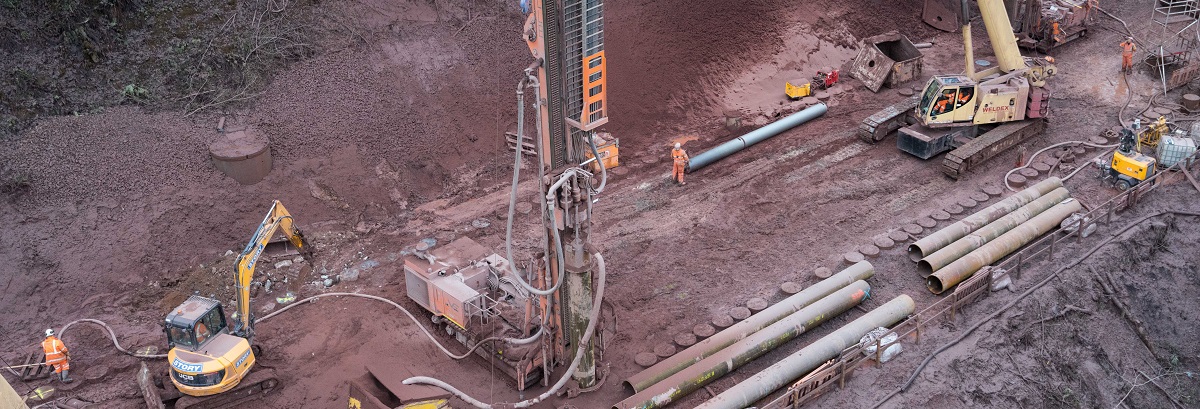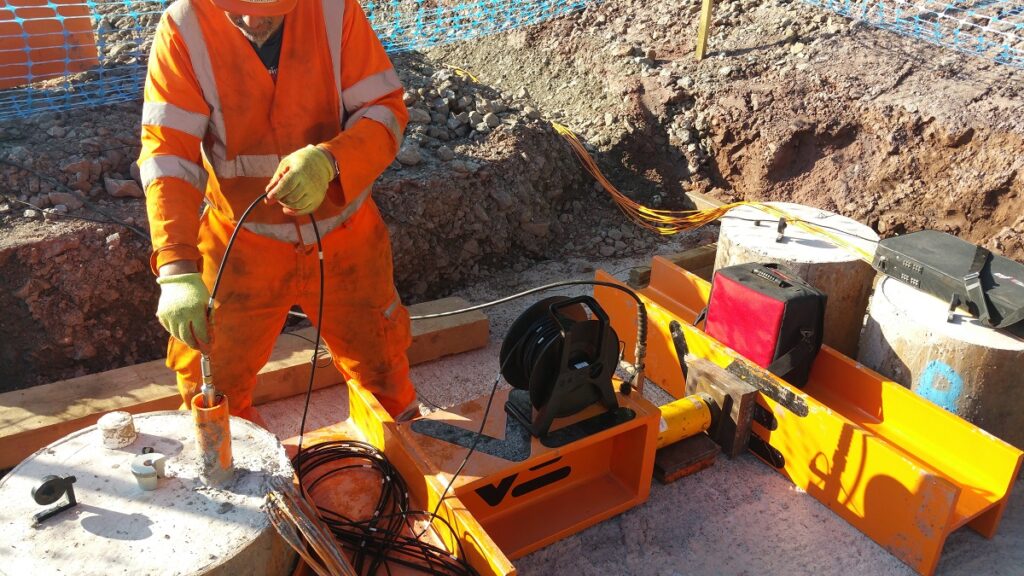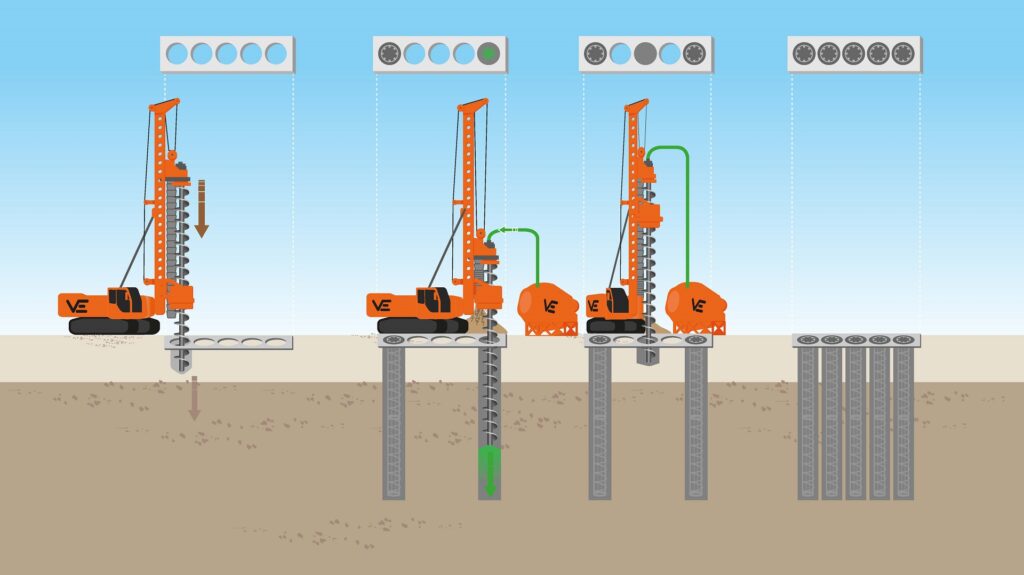A contiguous bored pile wall is a retaining wall consisting of concrete bored piles installed in various configurations with a minimum spacing between consecutive piles to form, a retaining structure.
A contiguous bored pile wall is a retaining wall formed using CFA, Cased CFA (CSP), SFA or rotary bored piling techniques consisting of a row of unconnected piles cast-in-situ with a nominal gap between consecutive piles.
They are flexible in shape and design compared to diaphragm retaining walls and generally offer a significant applied load advantages compared to that of sheet piled walls.
Key capabilities
- Rig loadings: 6–140 tonnes
- Diameter:
- 300–1,200mm to a depth of 40m, diameter dependent, using CFA techniques
- 300 – 2,100mm to a depth of 65m using rotary bored piling techniques



